 Airshow performer Spencer Suderman appears to have set a new world record with an 81-turn, three-minute-plus inverted flat spin in a Pitts S–2B that took him from 23,000 feet to less than 2,000 feet over the California desert. It was Suderman’s third attempt at the previous record of 78 turns, set by airshow legend Wayne Handley in a Giles 202 in 1999. Suderman coordinated the attempt with the FAA to get permission to fly his VFR biplane (built in 1984) above 18,000 feet over El Centro near the Salton Sea. He also wore an oxygen mask, gloves, and several layers of clothes to cope with the outside air temperature of minus 9 degrees Fahrenheit. He recorded the event with three onboard video cameras. “I knew the airplane could do it because it’s such a beautiful spinner,” Suderman said. “The trick was getting high enough.”
Airshow performer Spencer Suderman appears to have set a new world record with an 81-turn, three-minute-plus inverted flat spin in a Pitts S–2B that took him from 23,000 feet to less than 2,000 feet over the California desert. It was Suderman’s third attempt at the previous record of 78 turns, set by airshow legend Wayne Handley in a Giles 202 in 1999. Suderman coordinated the attempt with the FAA to get permission to fly his VFR biplane (built in 1984) above 18,000 feet over El Centro near the Salton Sea. He also wore an oxygen mask, gloves, and several layers of clothes to cope with the outside air temperature of minus 9 degrees Fahrenheit. He recorded the event with three onboard video cameras. “I knew the airplane could do it because it’s such a beautiful spinner,” Suderman said. “The trick was getting high enough.”
Suderman credits ElectroAir, a Michigan firm that makes an FAA-certified, variable-timing electronic ignition system, for his success. Suderman is helping ElectroAir collect engine data for FAA certification in six-cylinder Lycoming engines. The units are FAA certified in four-cylinder Continental and Lycoming engines, as well as some six-cylinder Continentals.
It took about 30 minutes for Suderman to climb to 23,000 feet. The spin recovery initiated at 2,000 feet was no different after 81 turns than it is after just a few, he said. He has applied to Guinness World Records for a new standard in consecutive inverted flat spins. His previous efforts resulted in spins of 64 and 77 turns.
Email [email protected]
British airman Wilfred Parke is credited with the first spin recovery in 1912, when he inadvertently entered a spin at 700 feet in an Avro G cabin biplane and tried various techniques, finally applying rudder opposite to the spin and recovering at 50 feet.—Flight magazine, June 1912
AOPA Airplane Personality Quiz
Which GA aircraft are you meant to fly?
If you’ve ever wondered which aircraft in the vast and varied general aviation fleet is perfect for you, AOPA can give you the answer in minutes.
Answer the 14 seemingly unrelated questions that make up the AOPA Aircraft Personality Quiz online, and your dream airplane will appear on the computer monitor right in front of you. There won’t be any probing about your net worth, aviation experience, or ratings. The quiz—sponsored by the Pilot Insurance Center—is simply a fun, nonscientific exercise that attempts to match a pilot’s temperament to the characteristics of his or her dream machine.
There are more than 40 possible quiz results, ranging from a Piper J–3 Cub to a Pilatus PC–12, an Aviat Husky to a P–51 Mustang—but there are no wrong answers.
Among the Beta testers at AOPA headquarters, Mooney’s speedy, efficient, and sporty model 201 was a clear winner. See which aircraft is right for you.
On the web: www.aopa.org/apps/quizzes
Let the show season begin
Your airplane enters the home stretch
By Thomas A. Horne
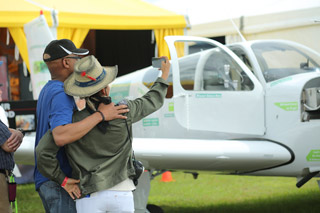 The Debonair made a great showing at this year’s Sun ’n Fun International Fly-In and Expo, drawing hundreds of hopeful winners to AOPA’s new, expanded tent location. Since the Debonair Sweepstakes is a two-year project, this event kicked off the airplane’s final show season. Yours truly and other AOPA staffers manned the Debonair during the six-day show, fielding questions and comments and, of course, doing no small amount of hangar flying.
The Debonair made a great showing at this year’s Sun ’n Fun International Fly-In and Expo, drawing hundreds of hopeful winners to AOPA’s new, expanded tent location. Since the Debonair Sweepstakes is a two-year project, this event kicked off the airplane’s final show season. Yours truly and other AOPA staffers manned the Debonair during the six-day show, fielding questions and comments and, of course, doing no small amount of hangar flying.
Next stop for the Debonair was Santa Fe Aero Services at Santa Fe Municipal Airport in New Mexico. One year ago, that’s where the airplane had its panel reconstructed and modernized. Now it’s back for its annual inspection and some attention to a few avionics and other squawks. Of course, the trip to Santa Fe was the big highlight. My route took me north from Sun ’n Fun’s Lakeland Linder Regional Airport location, then along a path that hugged the Gulf Coast. I made a stop for fuel at Baton Rouge Metropolitan Airport-Ryan Field to check on the airplane’s fuel consumption—and confirm the accuracy of the airplane’s Electronics International MVP-50P engine and systems analyzer. Sure enough, the MVP fuel flow readout affirmed my calculations from the fill-up—I was burning an average of 14.7 gph.
That’s good to know, because the Debonair’s overhauled and converted, 260-horsepower IO-470-N engine is being run hard for its break-in period. I knew that the engine was burning more fuel than it would at “normal” power settings—but how much more? Turns out I could have gone nonstop from Lakeland to Waco, Texas, in six hours, but initial calculations gave me fuel reserves of just 10 gallons. Could I trust the MVP and go for it—or play it conservative and see exactly how the engine’s fuel flows added up? Now we know that the airplane’s fuel management instruments are A-OK in the fuel-burn department.
The final leg of the trip, from Waco to Santa Fe, took 3.7 hours, making the whole trip’s duration a healthy 9.7 hours. At 6,000 feet with an OAT of 9 degrees Celsius, the Debonair turned in 170 KTAS at 100 degrees rich of peak EGT (resulting in an 18.3-gph fuel burn), and 165 KTAS when leaned to 50 degrees rich (the 14.7-gph burn). I varied power from time to time, but stayed at the 14.7-gph setting for most of the trips.
After the annual inspection, the Debonair was off to the AOPA Regional Fly-In at San Marcos Municipal Airport (HYI) in Texas April 26. Then it was back to the paint shop at KD Aviation’s facility at the Stewart International Airport in Newburgh, New York. There, the airplane gets its striping—just in time for AOPA’s Regional Fly-Ins at Indianapolis Regional Airport (MQJ) in Indiana May 31 and Plymouth Municipal Airport (PYM) in Massachusetts July 12. Then it’s off to the EAA AirVenture in Oshkosh from July 28 through August 3. The sweepstakes closes July 31. If your AOPA membership is current, you are automatically entered to win.
On the web: http://blog.aopa.org/sweepstakes_logbook/ for more news about the Debonair Sweepstakes project.
Email [email protected]
AOPA sweepstakes coverage sponsored by Bank of America
Pilot Products
Wired or wireless
Headset system and old-fashioned paper charts
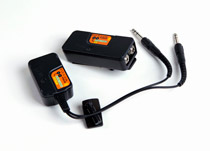 Multiple wires and cords can make our cockpits resemble Frankenstein’s laboratories—but EQ1, a Spokane, Washington, firm, has invented a wireless headset system that cuts clutter.
Multiple wires and cords can make our cockpits resemble Frankenstein’s laboratories—but EQ1, a Spokane, Washington, firm, has invented a wireless headset system that cuts clutter.
Plugging an EQ-Link module into an airplane’s mic and earphone jacks allows anyone wearing an EQ1 wireless headset ($750) to communicate via a remote radio link that the company says is much more reliable than Bluetooth. If you and your passengers don’t have (or want) wireless headsets, the EQ1 system allows traditional dual-jack aviation headsets to join the wireless network through an EQ Reverse Link module.
I recently flew with the hybrid system and found it easy to use, thoughtfully designed, and a harbinger of things to come. With the EQ Link plugged into the radio/intercom and the EQ Reverse Link connected to my David Clark H10-60 headset, an automated voice informed me the link had 21 hours of battery life remaining, and that my headset had been “detected.”
Communications with other aircraft and the control tower were normal, and my radio checks were reported as loud and clear. I tucked my headset cords and EQ Reverse Link inside my jacket, where they remained hidden for the duration of the flight. At the end, the Reverse Link smartly turned itself off at engine shutdown to conserve battery power. (The battery is rechargeable.)
My only gripes were a slightly tinny sound quality in my own headset, and a high-pitched squeak when I depressed the radio push-to-talk button. The squeak is an audible signal that the system is transmitting, but it’s so loud it sounds like an alarm.
Also, the hybrid system is designed as an interim solution meant to bridge the gap between today and a future in which wireless headsets will be the norm. That reality is rapidly taking shape, as the major headset manufacturers are developing wireless units.
Price: $699
Contact: www.wirelessaviationheadsets.com
—Dave Hirschman
Sky-Nav bound charts
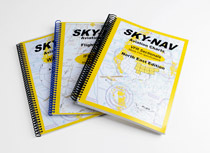 Whether you want to admit it or not, your iPad is fallible. It turns off without warning, it crashes, and the battery drains. There will come a time when you are without a chart, which is a perfect time to have a set of Sky-Nav bound charts.
Whether you want to admit it or not, your iPad is fallible. It turns off without warning, it crashes, and the battery drains. There will come a time when you are without a chart, which is a perfect time to have a set of Sky-Nav bound charts.
These spiral-bound books of sectional and low-altitude en route charts are a great resource to keep under the seat for when ATC assigns a fix you can’t find, the iPad dies, or you brought the wrong chart. The charts are nicely reproduced, and pricing includes updates for a year.
Like an electronic flight bag, coverage is across multiple states, meaning you may only need to buy one book to serve all your needs. The company makes straight sectionals, full Caribbean books, and unique low-altitude en route charts with sectional overlays.
Paper may seem like a dying source of information, but it’s still reliable and a great alternative to digital.
Price: Varies; $59 for most options
Contact: www.skynavcharts.com
—Ian J. Twombly
‘AOPA Live’ celebrates two years
New set is show’s birthday present
 Debuting in May 2012, AOPA Live This Week—a weekly television-style webcast—has set the bar high for general aviation news and entertainment. Hosted by Editor in Chief Tom Haines, AOPA Live This Week features timely and interesting stories on general aviation. The show—created by Executive Producer Warren Morningstar—has grown in popularity, with viewership some weeks topping 50,000. The show is posted every Thursday.
Debuting in May 2012, AOPA Live This Week—a weekly television-style webcast—has set the bar high for general aviation news and entertainment. Hosted by Editor in Chief Tom Haines, AOPA Live This Week features timely and interesting stories on general aviation. The show—created by Executive Producer Warren Morningstar—has grown in popularity, with viewership some weeks topping 50,000. The show is posted every Thursday.
AOPA Live This Week is filmed on a virtual set with just two employees—Morningstar and Associate Producer Paul Harrop. As the show enters its third year, the webcast will be recorded on a new set at AOPA headquarters in Frederick, Maryland. The set will be complete in June.
75 years ago
AOPA was founded on May 15, 1939
United States President Franklin D. Roosevelt welcomes King George VI to America, the first reigning British monarch to set foot in the United States. The average American wage is $1,730 per year (83 cents per hour). Unemployment is at 17.2 percent. The first air-conditioned car is introduced, the zipper is cheaper to use than buttons, and 80 percent of Americans own a radio.
June 1
First televised boxing match—Lon Nova defeats Max Baer.
June 4
The St. Louis, a ship carrying 907 Jewish refugees, is denied permission to land in Florida and is forced to return to Europe.
June 6
The first Little League Baseball game is played in Williamsport, Pennsylvania.
June 8
The king and queen of England eat hot dogs in Hyde Park, New York
June 12
The National Baseball Hall of Fame and Museum is dedicated in Cooperstown, New York.
June 14
The Tientsin Incident—the Japanese blockade the British concession in Tianjin, China
June 21
Lou Gehrig retires from baseball after being diagnosed with ALS.
June 24
The government of Siam changes its name to Thailand (“Free Land”).
June 29
Pan Am’s Dixie Clipper completes first U.S.-to-Europe flight (New York to Marseilles, France).
Giving Back Awards
Girls Inc, creates SkyGirls
Introducing girls to all aspects of aviation
By Benét J. Wilson
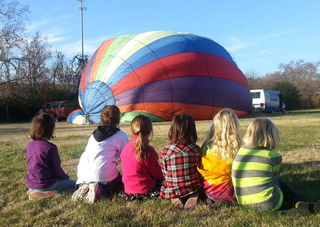 One of the first things Girls Inc. of Oak Ridge, Tennessee, did after receiving a $10,000 AOPA Foundation Giving Back grant was to start its yearlong aviation program for girls by offering members a ride in a hot air balloon.
One of the first things Girls Inc. of Oak Ridge, Tennessee, did after receiving a $10,000 AOPA Foundation Giving Back grant was to start its yearlong aviation program for girls by offering members a ride in a hot air balloon.
Oak Ridge is in an area centered on science, technology, engineering, and mathematics (STEM), with a lot of female engineers living in the area, said Executive Director Rhoni Basden. The city is home to a Department of Energy nuclear and high-tech research facility, NOAA’s Atmospheric Turbulence and Diffusion Division, and more.
“We originally came up with a big board of ideas, and broke them down on what we could do with $10,000. We realized we could do everything we planned,” she said.
The first event was the hot air balloon ride, said Basden. “We wanted to start with something big and showy for the girls, to get them excited about everything else to come,” she said.
Future activities include visiting the air traffic control tower at Knoxville’s McGhee Tyson Airport, learning Morse code, and celebrating Amelia Earhart and Bessie Coleman with a history day, said Basden. “We’ll also have two female pilots speak to the girls, we’ll visit the Tennessee Museum of Aviation in Sevierville, and we hope to take a trip to Huntsville, Alabama, to visit Rocket City,” she said. “We’re also working with the local [Ninety-Nines] chapter, and we’ll do a big aviation science fair for the community. We want to get our girls excited about aviation and its career fields.”
Email [email protected]
Air Care Alliance looking for staffer
The Air Care Alliance is using its AOPA Foundation grant to fund a position that will help grow its program and communicate the benefits of charitable flying.
Lindy Kirkland is the volunteer executive director for the alliance, a nonprofit that serves as a clearinghouse for volunteer-based charitable flying groups.
“The alliance needs a part-time employee to coordinate volunteers who are spread across the country,” said Kirkland.
“We’re all volunteers, and we desperately need a part-time staffer to organize communications with the board and our members, and also help us promote public benefit flying.” The new position will allow the alliance to have a more visible presence in the media, said Kirkland.
On the web: www.aopa.org/foundation/giving-back-program
The AOPA Foundation awarded 2013 Giving Back Program grants to the following organizations:
Air Care AllianceLindrith, New Mexico
Challenge Air for Kids and Friends, Inc.Dallas, Texas
Duluth Aviation InstituteDuluth, Minnnesota
Girls Incorporated of Oak RidgeOak Ridge, Tennessee
Kentucky Institute for Aerospace EducationFrankfort, Kentucky
LightHawkLander, Wyoming
Pilots N PawsLandrum, South Carolina
Recreational Aviation FoundationBozeman, Montana
Veterans Airlift CommandMinneapolis, Minnesota
Young AviatorsRacine, Wisconsin
The Giving Back Program awards grants of up to $10,000 to nonprofit groups that perform charitable work through GA and awards flight training scholarships to individuals who want to learn to fly or pursue aviation careers. Grant applications for 2014 are due July 11.
This month on the AOPA JAY: ‘fire boss’
When a small brush fire threatens property in southwestern Utah, you’re the first aerial asset on the scene. The smoke is easy to spot, but the fire itself is tucked between hills. With the ability to scoop hundreds of gallons of water at a time from a nearby reservoir, your “Fire Boss” version of the Air Tractor AT-802F Single Engine Air Tanker—with specialized Wipaire amphibious floats that allow touch-and-go scooping of water—is the perfect tool for the job.
Extra: Don’t have your AOPA Jay yet? Find out more online.
Flying clubs
Like-minded aviation nuts
Low training and flying costs fuel East Hill Flying Club
By Benét J. Wilson
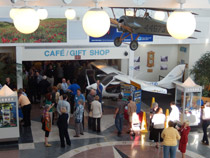 Low-cost flight training, a fleet of nine aircraft, flexible memberships, and social interaction are among the reasons to join the Ithaca, New York-based East Hill Flying Club. The club also operates a Part 141 flight training school that won an AOPA Flight Training Excellence award in 2012.
Low-cost flight training, a fleet of nine aircraft, flexible memberships, and social interaction are among the reasons to join the Ithaca, New York-based East Hill Flying Club. The club also operates a Part 141 flight training school that won an AOPA Flight Training Excellence award in 2012.
The club was formed in 1952 by mechanics working for Robinson Airlines, a predecessor carrier to US Airways based in Ithaca. In 1959 East Hill started accepting members from the general public.
East Hill, which operates as a not-for-profit 501(c)(7) club, has 258 members and three Cessna Skyhawks, two C-152s, a Mooney M20J, and a Citabria 7ECA. “We have a Flight Design CT/LSA on lease for our exclusive use and share a Seneca II with another flight school for our multi-training,” said David St. George, club manager and chief instructor.
The club offers active and inactive memberships, family memberships, and owner-member privileges, along with heavily discounted junior memberships for younger folks who only want to fly once a month, said St. George.
New members pay a $700 refundable deposit and $400 initiation fee that makes them a part-owner of the club aircraft and fully covered by insurance. Dues are $50 a month for full flying members and $20 a month for social and owner-members. The club has its own mobile app in the iTunes and Google Play stores that includes information on East Hill, local weather, flight scheduling and tracking, news, and links to its website, Facebook page, and Twitter account.
East Hill’s flight school offers training in everything from sport to multiengine ATP, said St. George.
Social events held by the club include weekend member meetings with a show-and-tell presentation of interesting aircraft, a mid-week open tutorial with a topic focus, and a monthly FAA Wings seminar.
St. George credits East Hill’s success to having a club with like-minded aviation nuts as a core that has been built up around good aircraft. “As you grow, find out what people want and build. You cannot keep everyone happy, but you try to maintain civility and friendships. Aviation is a small world and you need all the friends you can find,” he said.
Email [email protected]
Precision flying offered
Wagstaff teams for aerobatics instructing
By James Moore
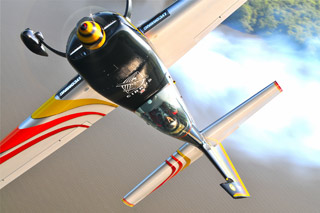 Airshow legend and three-time U.S. National Aerobatic Champion Patty Wagstaff is teaching the finer points of precision flying in Florida, and has teamed up with Extra Aircraft distributor Southeast Aero to formally launch the venture.
Airshow legend and three-time U.S. National Aerobatic Champion Patty Wagstaff is teaching the finer points of precision flying in Florida, and has teamed up with Extra Aircraft distributor Southeast Aero to formally launch the venture.
The Patty Wagstaff Aerobatic School offers training for competition, recreation, and airshow performing, along with tailwheel and upset recovery training tailored to individuals and corporate flight departments.
“Starting an aerobatic school gives me and my instructors a chance to pass on our experience in aerobatics and upset training, and to help create more skillful and safer pilots,” Wagstaff said. “We have already attracted students from Australia, Europe, and Canada, and we are hoping to become one of the premier aerobatic training centers in the world.”
Wagstaff is also serving as an AOPA Ambassador in 2014, with appearances planned at major airshows and AOPA Fly-In events around the country to share her energy and enthusiasm with fellow pilots.
Southeast Aero President Kramer Upchurch said Wagstaff’s school provides a new dimension to the aircraft sales, maintenance, and avionics business—and a new reason to visit Northeast Florida Regional Airport in St. Augustine, Florida. “Now we can offer a flying experience with one of the premier performers in aerobatics.”
Wagstaff, a 2004 inductee in the National Aviation Hall of Fame, offers training in both the Extra 300L and the American Champion Super Decathlon. Additional information and scheduling requests can be made by Email ([email protected]).
Email [email protected]
Small group: Wikipedia lists fewer than 100 pilots past or present whose fame comes solely from flying aerobatics.
Cessna twin returns to production—in France
Continental Motors has teamed with ASI Innovation of Reims, France, to purchase the type certificate and production rights for the Reims F406 twin-engine turboprop formerly produced in the 1980s by Reims Aviation. It was based on the Cessna 404 and was similar to the Cessna 441. Continental will return it to production and oversee commercial applications, while ASI will oversee government sales. Engine options include both a Pratt & Whitney PT6 turboprop and a piston engine burning either gasoline or diesel fuel.
The two companies will service the existing fleet as well. The F406 is an unpressurized, 14-passenger turboprop first flown by Reims Aviation Industries in 1983. “We are pleased by the acquisition of this great airframe,” Continental Motors President Rhett Ross said in a news release. “We will be excited to see it return to production in both a turbine and piston engine configuration to meet global demand for a cost-effective, twin-engine utility aircraft.”
Continental Motors is a subsidiary of AVIC International Holding Co. of Beijing, China. —Al Marsh
Aviation by the numbers
Number of pilots in the United States—552,892
Number of U.S.-registered aircraft, including airliners—310,432
Number of recreational pilots—239
Number of private pilots—186,338
Number of commercial pilots—105,455
Number of Airline Transport Pilots—146,002
Number of student certificates—109,997
Source: FAA
Turboprop solution
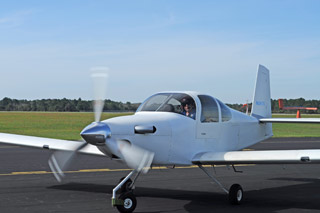 A Florida company that acts as distributor for a Czech-built turboprop engine is testing a 155-pound turboprop engine on a Van’s Aircraft RV–10. Van’s Aircraft is not involved in the project. Turbine Solution Group of Deland, Florida, began testing in June.
A Florida company that acts as distributor for a Czech-built turboprop engine is testing a 155-pound turboprop engine on a Van’s Aircraft RV–10. Van’s Aircraft is not involved in the project. Turbine Solution Group of Deland, Florida, began testing in June.
The project has been in progress for several years. It uses a 241-shaft-horsepower engine from PBS in the Czech Republic. The gas generator section, known as TJ-100, has many hours of flight time in gliders, and is used on the SubSonex jet built by Sonex Aircraft. Turbine Solution Group, headed by Christian Skoppe, calls the model the PBS TP-100 RV–10.
The basic engine weighs 128 pounds, but with exhaust, electrical wiring, and accessories, it is 155 pounds. A propeller has specifically been designed for the engine by Hartzell Propeller. Avionics on the aircraft are from Advanced Flight Systems. There are no performance details on the aircraft as yet, since it has not begun flight testing.
The company expects to give demonstration flights during EAA AirVenture at Oshkosh from July 28 to August 3. The company has served the noncertified market since 1996. The goal is to offer an RV-10 conversion kit for the turboprop engine installation. It is expected the aircraft will carry 120 gallons of fuel and operate as high as 20,000 feet. —Al Marsh
Powering Imagination
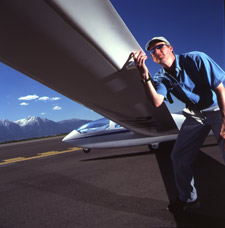 Erik Lindbergh, an advocate of sustainable aviation, has created a new initiative to promote and celebrate innovation. The grandson of one of history’s most famous aviators plans a flight adventure of his own to demonstrate the fruits of such innovation. Lindbergh has created Powering Imagination, dedicated to technologies that could make future aircraft quieter while taking advantage of renewable and sustainable fuels. “It is critical to create a sustainable future for aviation,” Lindbergh said. “Emissions and noise are issues that are causing increasing restrictions on aviation around the world. Solving these challenges will ensure that future generations can share our dreams of flight.”
Erik Lindbergh, an advocate of sustainable aviation, has created a new initiative to promote and celebrate innovation. The grandson of one of history’s most famous aviators plans a flight adventure of his own to demonstrate the fruits of such innovation. Lindbergh has created Powering Imagination, dedicated to technologies that could make future aircraft quieter while taking advantage of renewable and sustainable fuels. “It is critical to create a sustainable future for aviation,” Lindbergh said. “Emissions and noise are issues that are causing increasing restrictions on aviation around the world. Solving these challenges will ensure that future generations can share our dreams of flight.”
Lindbergh plans to follow in the footsteps of his grandparents, Charles and Anne Morrow Lindbergh, who crossed oceans and continents in 1931 on a mission to test aviation technologies and connect cultures. Anne Morrow Lindbergh’s 1935 book North to the Orient details that adventure, and inspired her grandson to plan a similar flight in 2016, covering 8,000 nm in a modern floatplane powered by alternative fuels.
“My grandparents came to understand the need for balancing technological progress with stewardship of our natural environment and wilderness,” Lindbergh said. “I was inspired to continue that vision by exerting a positive influence on the private space industry with the Ansari XPrize and recently on the electric aircraft industry.” The Lindbergh Electric Aircraft Prize has for several years rewarded promising developments in electric aircraft technology, and Lindbergh plans to broaden that scope by adding programs for technology that makes aircraft quieter—and for alternative fuels as well. —Jim Moore
Aerial Adventures
New York state of mind
Flying the nation’s biggest skyline is a wonderful experience
By Ian J. Twombly

If you’ve taken time to assemble an aviation bucket list, odds are that flying the Hudson River at skyscraper heights is on it—for good reason. Flying alongside the biggest city in the United States is a special experience. Tourists may be able to pay a helicopter sightseeing company for something similar, but there is nothing quite like being able to give a personal tour of the Big Apple. Although sometimes saturated with traffic, this flight is otherwise quite easy with only a little planning.
New York is one of the few air tours in the country that has some regulatory requirements, thanks to a high-profile accident a few years ago. The East River, the narrow tidal strait that delineates Long Island from Manhattan, is more limited. It’s only open with ATC permission.
Most pilots take the Hudson River, the major artery that separates New York and New Jersey. It’s a can’t-miss landmark that paints an easy road to follow from Staten Island to White Plains, the two traditional entry/exit points for those wanting the full tour.
Invest in a New York Terminal Area Chart to study the few particulars that must be followed on this flight. It spells out the required air-to-air frequency, the six required reporting points, maximum airspeed, and suggested altitude. Then it’s time to go on the FAA’s website (www.faasafety.gov) and take the New York Special Flight Rules Area course.
Most important is to remember that the river route is popular for a reason, and there will likely be lots of other aircraft. So keep an eye out and enjoy the view.
Email [email protected]
What you’ll see
Flying in from the south, the first major landmark and reporting point is the Verrazano-Narrows Bridge, which is the longest suspension bridge in the country. It connects Staten Island and Brooklyn.
Look up and to the left and you’ll find Lady Liberty. It’s possible to circle the Statue of Liberty. Refer to the chart for details.
The southern end of Manhattan looms large, including the new One World Trade Center, Chrysler Building, Empire State Building, and all of New York’s other great structures.
Spend too much time looking in the city and you’ll miss the fantastic Intrepid aircraft carrier museum, with much of the collection visible on the deck of the ship.
Look north and you’ll see the second bridge on the tour, the George Washington Bridge, or GWB as some locals call it. It’s the world’s busiest bridge, carrying approximately 102 million cars a year.
View the video: This online video details how to fly the New York corridor. Second in a series.
What local pilots know:
Multiple routes are available. Although flying under the Class B airspace is the most frequent trip, controllers are accommodating, and will clear other altitudes. The FAA helped facilitate this by creating the “Skyline Route,” which goes through the Class B.
Let ATC work for you by requesting clearance through special areas. One pilot says that LaGuardia Tower will clear you over Central Park at 1,500 feet, then down the East River to meet the Hudson. With no mandatory reporting requirements, it’s potentially less stressful.
Check notams because New York is host not only to a lot of professional sporting events, but also many high-profile political events, such as United Nations summits. Major TFRs are common.



